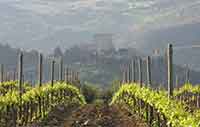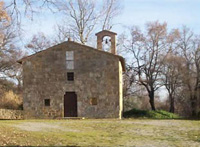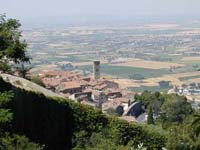| |
|
| |
|
|
|
|
|
|
| |
 |
 |
| Paolo di Giovanni Fei , The Presentation of the Virgin, c. 1400, National Gallery of Art in Washington D.C., Samuel H. Kress Collection
|
|
 |
 |
| |
|
|
|
| |
|
Paolo di Giovanni Fei (1369 - 1411)
|
|
|
|
| |
|
| Paolo di Giovanni (San Quirico, Castelvecchio, c. 1345; d c. 1411) was influenced by the brothers Pietro Lorenzetti and Ambrogio Lorenzetti and by the Sienese masters Bartolo di Fredi and Simone Martini. His paintings are characterized by their bright clear palette often against a gilded and punched ground, and his wealth of naturalistic and ornamental detail.
Paolo di Giovanni Fei is often confused with Francesco di Vannuccio and at one time was thought to have been a pupil of Vannuccio's partner, Andrea Vanni. He held public positions in Siena from 1369 and was first mentioned in the register of painters enrolled in the Breve dall'Arte in 1389. There are a number of signed and dated works from 1381 onwards. Between 1395 and 1410 he is documented as working at Siena Cathedral. Works such as the Birth of the Virgin (Siena, Pin. N.) and the Assumption of the Virgin (Washington, DC, N.G.A.) show the influence of the Lorenzetti brothers, Pietro and Ambrogio, Bartolo di Fredi and Simone Martini. Paolo di Giovanni Fei's figures have a slightly jowly, long-cheeked and long-nosed facial type and hands with characteristically bulbous ended fingers. His style is marked by an overpowering delight in colour and incidental detail rather than rational spatial illusionism. He often adopts motifs of earlier Tuscan artists, such as the Christ Child holding his own foot. The figure truncated by architecture also occurs frequently. Although such devices were used to good effect in the works of the Lorenzetti and earlier painters, such as Jacopo del Casentino and Duccio, the same elements can confuse and work against spatial illusionism in Paolo di Giovanni Fei's work. He influenced Sassetta with such works as the Virgin and Child Enthroned with SS John the Baptist, Andrew, Francis and the Prophet Daniel (Siena, Pin. N.) and Giovanni di Paolo.
His artistic personality was first elucidated by Bernhard Berenson.
The extensive list of attributed works assembled by Berenson was subsequently reduced by Mallory.
|
|
|
|
|
| |
|
Anne and Joachim were elderly and almost without hope of having children; when an angel announced that Anne would conceive, she promised the child to God's service. Here, the young Virgin, aged four or five, takes leave of her family to enter the temple. Devotion to the Virgin was especially strong in Siena, where she was patron saint. This panel was probably part of a large altarpiece commissioned for the city's cathedral, where it would have been seen near Duccio’s own altarpiece dedicated to the Virgin in Majesty, the Maestà.
Paolo di Giovanni Fei, following in the tradition of Duccio and Simone Martini, used a brilliant palette — note the mosaiclike impression of his strong colors, which range from cool blues to salmony pinks and glassy greens. At the same time, Paolo has infused his scene with an appealing naturalness — legacy from another Sienese master, Pietro Lorenzetti. Paolo concentrates not on the awe-inspiring majesty of the Virgin, but on the human aspects of her story. The young Virgin pauses on the dais. Her expression as she turns a final time toward her parents is tender and rueful — the genuine response of a child. |
|
 The Presentation of the Virgin The Presentation of the Virgin (detail), c. 1400, National Gallery of Art in Washington D.C. |
|
| |
|
| |
|
Madonna and Child Enthroned with Saint John the Evangelist, Saint Peter, Saint Agnes, Saint Catherine of Alexandria, Saint Lucy, an Unidentified Female Saint, Saint Paul, and Saint John the Baptist, with Eve and the Serpent; the Annunciation |
| |
|
|
|
Paolo di Giovanni Fei, The Camarlingo Niccolò di Leonardo della Gazaia, His Scrivener and Three taxpayers, tempera on panel, with tooled gilding and silver, Victoria and Albert Museum, London
|
| Art in Tuscany | Sienese Biccherna Covers | Biccherne Senesi |
|
|
| |
|
|
| |
|
|
| |
|
|
| |
|
|
| |
|
|
|
|
| |
|

The Kress Collection encompasses more than 3,000 works of European art, and is distinguished for its abundance of Italian Renaissance paintings. The Collection was donated to scores of regional and academic art museums throughout the United States between 1929 and 1961, with the single largest donation reserved for the National Gallery of Art in Washington D.C.
Kress Foundation | Browse the Collection

[1]
|

Podere Santa Pia is a restored farmhouse surrounded by fields in a tranquil and sunny position, close to the medieval hilltop village Castiglioncello Bandini.
The town of Cinigiao is just across the valley, and the Abbey od Sant'Antimo, Montalcino, Pienza and Montepulciano are within easy driving distance. Tuscany is filled with world-renowned wine regions, and although Santa Pia is off the beaten track it is the ideal choice for those seeking a peaceful, uncontaminated environment, yet still within easy reach of the the famous Tuscan wines.
Podere Santa Pia has been beautifully restored to create spacious, stylish rooms combining elements of rustic tradition with modern comforts. It has terracotta tiled floors and beamed ceilings and breathtaking 300 degree views of the Maremma hills. Podere Santa Pia creates a perfect platform from which to enjoy the breathtaking scenery of this unique part of Italy.
Holiday accomodation in Tuscany | Podere Santa Pia | Artist and writer's residency
|
| |
|
|
|
|
|
|
|
|
|
| Wine regions |
|
Podere Santa Pia |
|
Podere Santa Pia, view from the garden on the valley below
|
| |
|
|
|
|
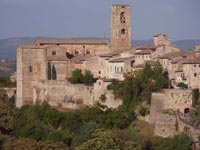
|
|
|
|

|
Colle Val d'Elsa |
|
Siena, duomo |
|
San Gimignano |
| |
|
|
|
|
|
|
|
|
|
Pieve di Santa Maria dello Spino
|
|
|
Cortona |
|
|
|
|
|
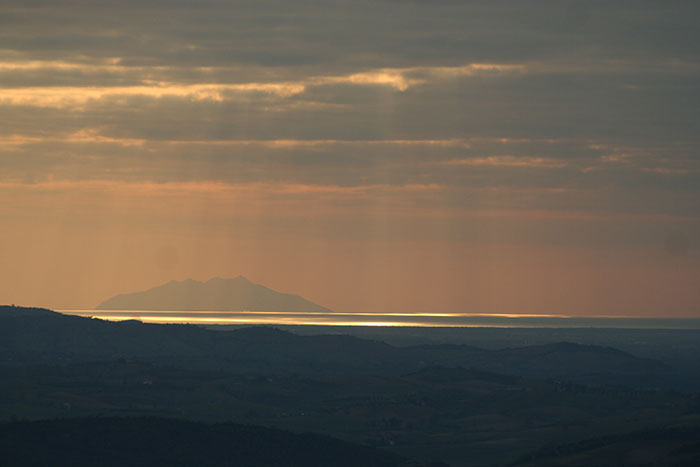 |
Podere Santa Pia isoffering offering its guests a breathtaking view over the Maremma hills. On clear days or evenings, one can even see Corsica.
|
| |
|
|
| |
|
|
|
| |
|
|
|
| |
|
|
|
| |
|
|
|
| |
|
|
|
| |
|
|
|






